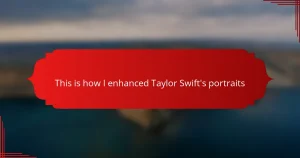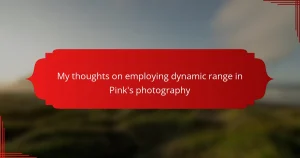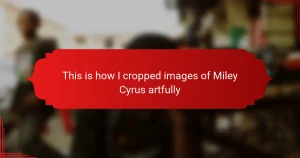Key takeaways
- Capturing the energy and emotion of female performers, particularly during live performances, is essential for impactful photography.
- Utilize techniques such as fast shutter speeds and high ISO settings to adapt to low-light conditions and capture dynamic moments effectively.
- Post-processing enhances concert images by focusing on vibrancy and emotion, bringing the performance to life in the final photos.
- Sharing concert photography online helps engage with a community and showcase the connection between artists and their audience.

Overview of Female Singer Photography
When I think about female singer photography, I’m often struck by the unique energy and emotion these artists radiate on stage. Capturing a live performance isn’t just about the technical aspects; it’s about the connection between the artist and the audience. Have you ever felt that electrifying moment when a singer belts out a high note, and the entire crowd reacts? Those are the precious instances I strive to encapsulate in my work.
I remember the first time I watched a female artist perform live; it was an experience that profoundly affected my perspective as a photographer. Her charisma and passion lit up the venue, and all I could think about was how to translate that energy into images. It’s moments like these that remind me of the importance of storytelling in photography, especially in capturing the essence of female performers who often challenge cultural norms through their art.
Moreover, there’s an undeniable camaraderie among female artists that often shines through in their performances. Their strength and vulnerability resonate, creating a compelling narrative that I find deeply inspiring. How often do we witness female singers unite to uplift each other rather than compete? This sense of unity is not just visually appealing; it’s something that deserves to be celebrated and captured in every frame.
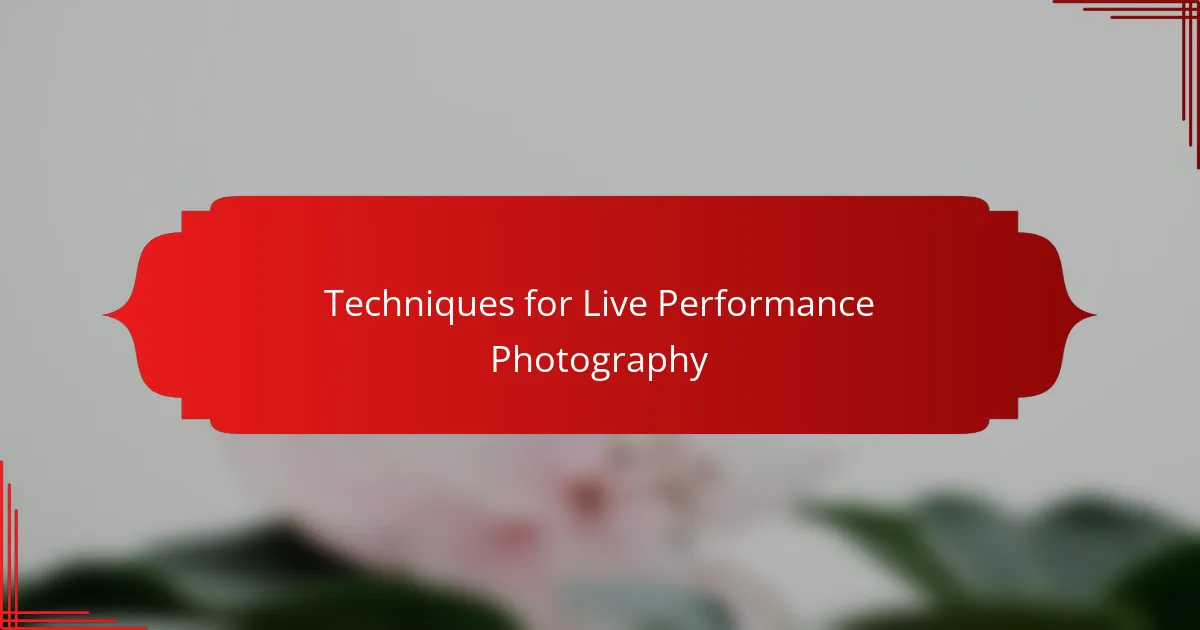
Techniques for Live Performance Photography
When photographing live performances, capturing the energy and emotion of the artist is crucial. In my experience, using a fast shutter speed is essential to freeze the action, especially during dynamic moments like Dua Lipa’s exhilarating dance moves. I often adjust my ISO settings based on the venue’s lighting; a higher ISO can help adapt to low-light situations, but I keep an eye out for noise in the images.
Another technique I rely on is anticipating the performer’s movements. This allows me to capture those spontaneous moments that resonate with the audience. Recently, during a Dua Lipa concert, I positioned myself near the front and was thrilled to capture her connection with the crowd—those candid smiles and outreach moments truly bring the shots to life.
Here’s a comparison of common techniques used in live performance photography:
| Technique | Description |
|---|---|
| Fast Shutter Speed | Freezes motion to capture sharp images of dynamic performances. |
| High ISO Settings | Allows for better performance in low-light conditions, although it may introduce noise. |
| Anticipation | Capturing spontaneous and emotional moments by predicting the artist’s movements. |
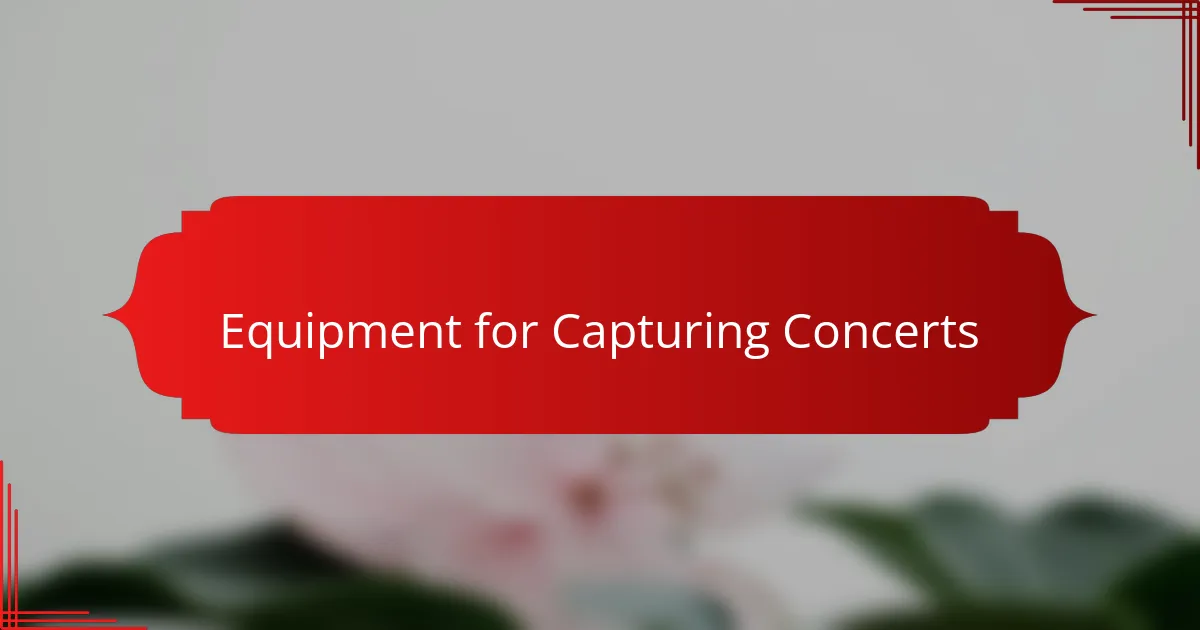
Equipment for Capturing Concerts
When it comes to capturing the magic of a concert, the right equipment can make all the difference. I remember the first time I photographed Dua Lipa live; my heart raced as I prepared my gear. Having a quality camera is essential, especially with the low-light conditions typical of concerts. I opted for my trusty DSLR, which handled the dim lighting beautifully and allowed me to capture vibrant colors and stunning details.
Here are some vital pieces of equipment that I always recommend for concert photography:
- DSLR or Mirrorless Camera: A camera with a fast shutter speed can freeze those high-energy moments.
- Fast Lens (f/1.8 or f/2.8): A lens with a wide aperture is crucial for low-light settings, helping to create that dreamy bokeh effect.
- Zoom Lens (24-70mm): This versatile option allows you to capture both wide shots and close-ups of the artist on stage.
- A Fast Memory Card: You’ll need it to handle the burst shooting, especially during dynamic performances.
- External Flash (if allowed): It can help in some scenarios but be cautious; most venues have strict rules about using flash photography.
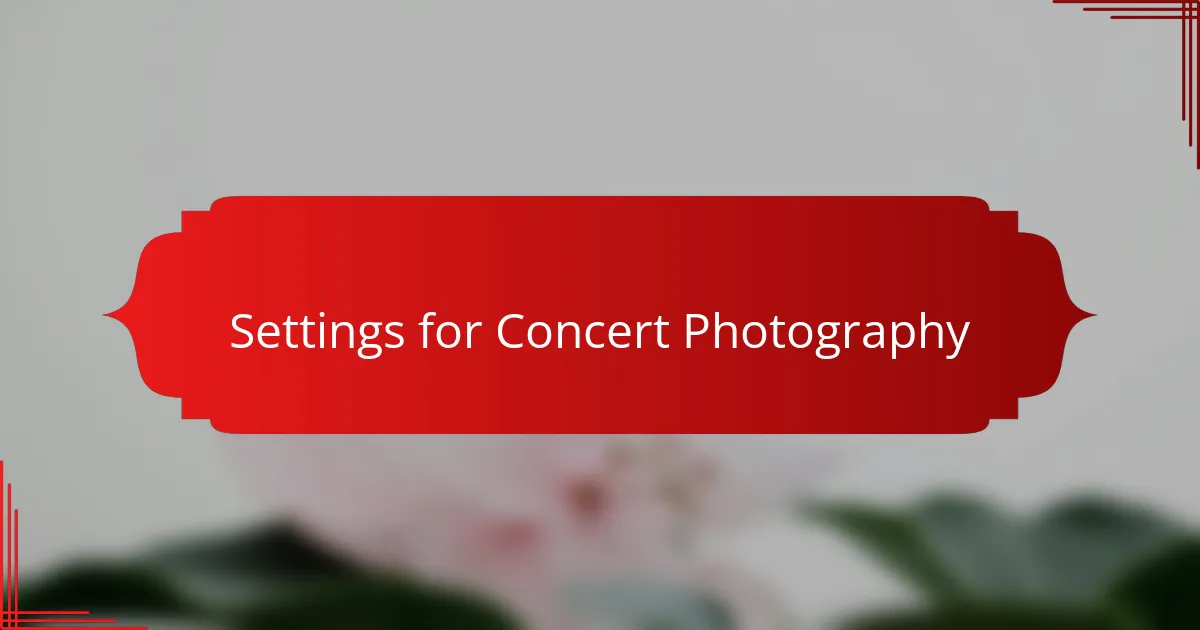
Settings for Concert Photography
When it comes to concert photography, especially for a dynamic artist like Dua Lipa, understanding your camera settings is crucial. I typically set my camera to a higher ISO, often around 3200 or 6400, to capture the low-light conditions typical of live performances. It’s exhilarating to feel the energy of the crowd and land that perfect shot as she moves across the stage, illuminated by vibrant lights.
A fast shutter speed, usually around 1/250 to 1/500 of a second, helps freeze her motion in dynamic moments. I remember one particular concert where my faster shutter speed allowed me to capture a breathtaking moment of Dua Lipa mid-dance, perfectly framed with the spotlight shining directly on her. It’s these moments that make concert photography so rewarding.
Here’s a quick comparison of the settings I recommend for capturing live performances effectively:
| Setting | Recommended Value |
|---|---|
| ISO | 3200 – 6400 |
| Shutter Speed | 1/250 – 1/500 sec |
| Aperture | f/2.8 – f/4 |
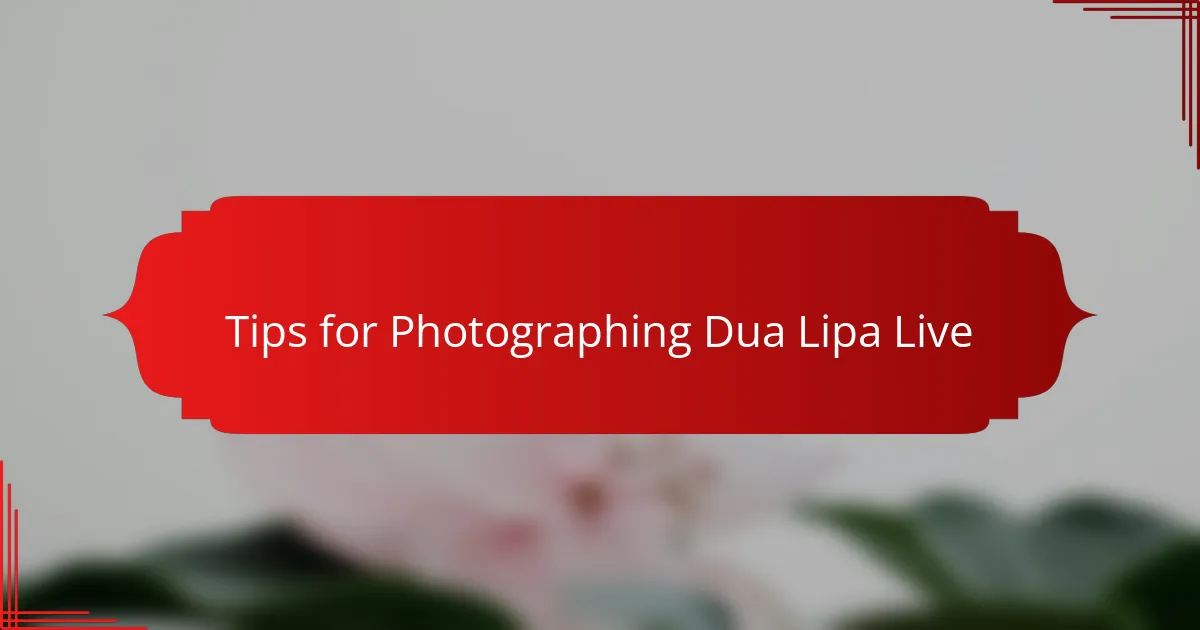
Tips for Photographing Dua Lipa Live
When photographing Dua Lipa live, capturing her energy is essential. I remember the excitement I felt as I prepared my gear, knowing that her dynamic performances would offer countless opportunities for stunning shots. It’s all about timing; you need to anticipate those high-energy moments and be ready to click the shutter right when she hits a powerful pose or interacts with the audience.
To optimize your live photography experience, consider these tips:
- Use Fast Shutter Speeds: Blur-free images are key when capturing her movement.
- Adjust ISO Accordingly: Live settings can be dark, so increase your ISO without sacrificing too much quality.
- Stay Aware of Lighting Changes: Dua often performs with dramatic lighting effects, so be ready to adapt quickly.
- Positioning Matters: Try to find a spot where you can capture her expressions and the audience’s reactions.
- Experiment with Angles: Different perspectives can bring out unique emotional narratives in your shots.
- Engage with Your Surroundings: Observe other fans and the overall ambiance; sometimes the best shots come from candid moments.
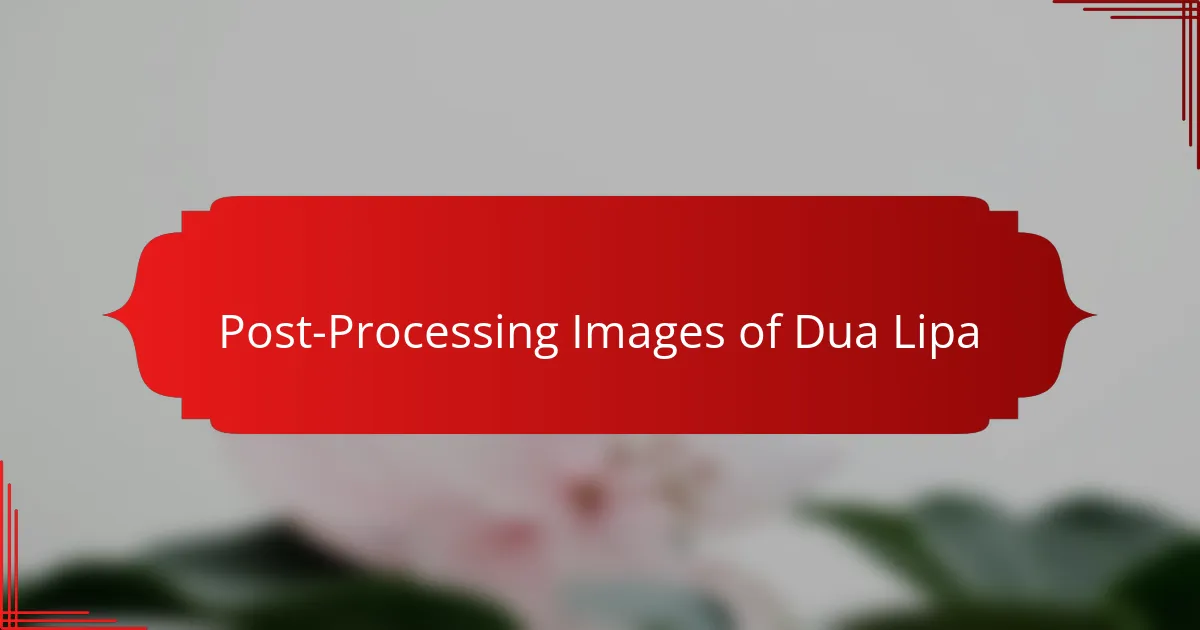
Post-Processing Images of Dua Lipa
Post-processing images of Dua Lipa is a crucial step that can truly elevate your concert photography. In my experience, I start by selecting the images that capture the raw energy and emotion of her performance. Once I’ve narrowed them down, I dive into editing, focusing on enhancing the vibrancy of colors and the intensity of the stage lights. Have you ever seen a photo that just pops? That’s what I strive for—making the magic of the live show leap off the screen.
One tool I often rely on is Adobe Lightroom. It allows me to adjust exposure, contrast, and saturation effectively. For instance, I remember a specific shot of Dua where her bright pink outfit nearly blended into the background. With a little tweaking, I was able to make her stand out against the darker tones of the stage. Isn’t it amazing how simple adjustments can transform an image from flat to fantastic? I often find that a well-edited photo can evoke the spirit of the performance even more than the original capture.
Finally, I think about the story each image tells. During the post-processing phase, I often consider what I felt when I took the shot—was it the excitement of the crowd? The emotion in Dua’s face? By keeping these factors in mind, I can edit in a way that enhances the narrative of the performance. It’s not just about making a picture look good; it’s about making it feel alive.
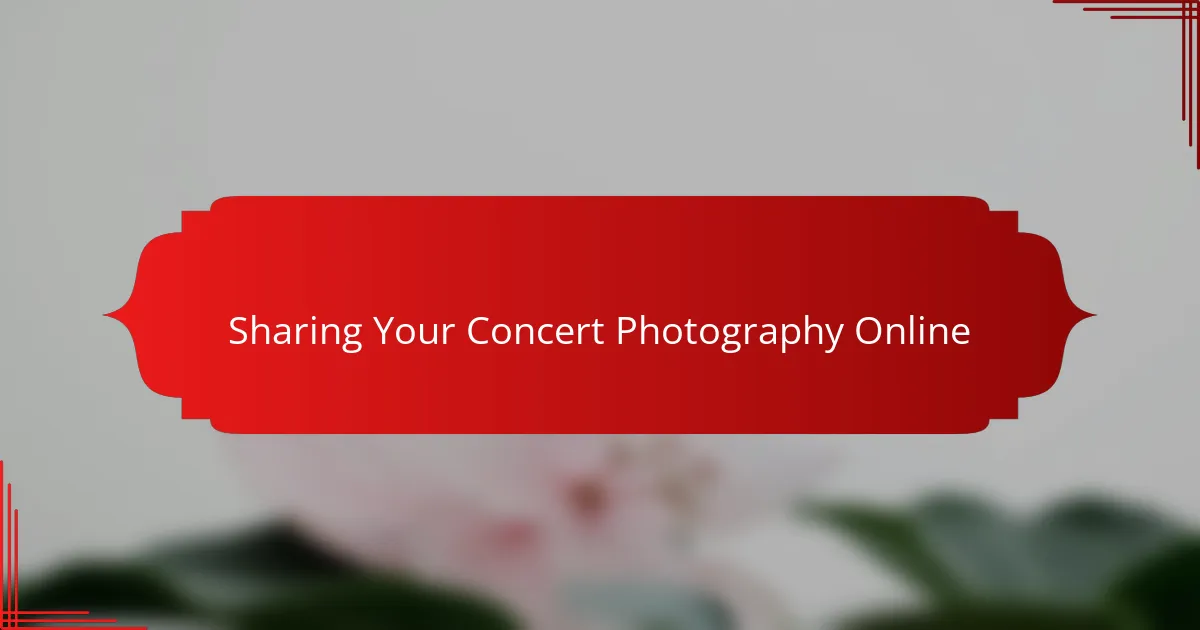
Sharing Your Concert Photography Online
Sharing your concert photography online can be rewarding and thrilling. I remember the first time I posted a photo I took of Dua Lipa live. The rush of receiving likes and comments from fellow fans was exhilarating. It felt amazing to connect through my work, and I quickly realized how sharing these moments could bring people together.
When sharing your concert images, consider these tips:
- Choose your best shots: Highlight the most striking images that capture the artist’s energy and the crowd’s emotions.
- Tell a story: Pair your photos with captions that convey the experience and your personal thoughts.
- Engage with your audience: Reply to comments and messages; it builds a community around your work.
- Use appropriate hashtags: This helps your photos reach a wider audience who appreciate concert photography.
- Share behind-the-scenes insights: Give followers a glimpse into your creative process or challenges faced during the shoot.
